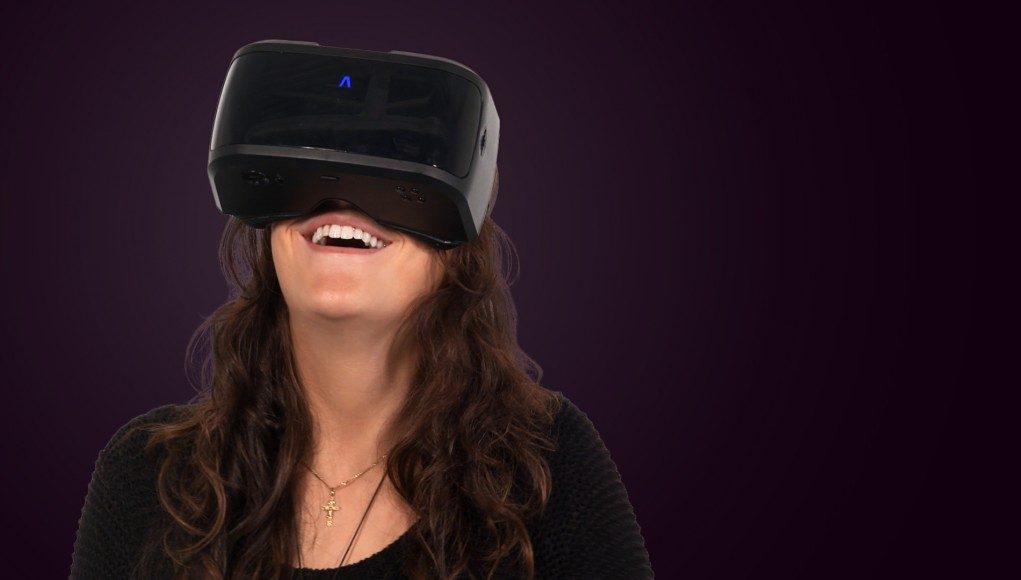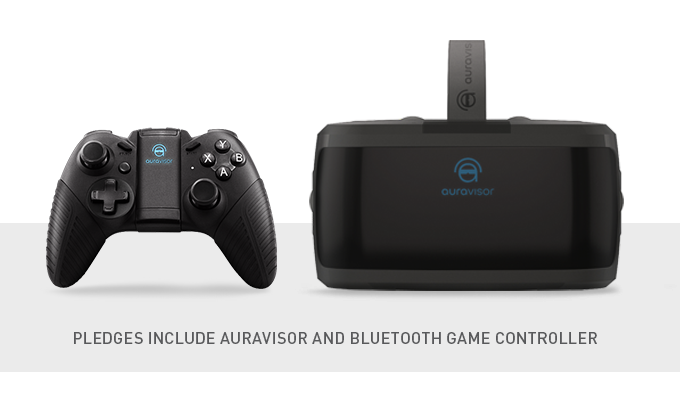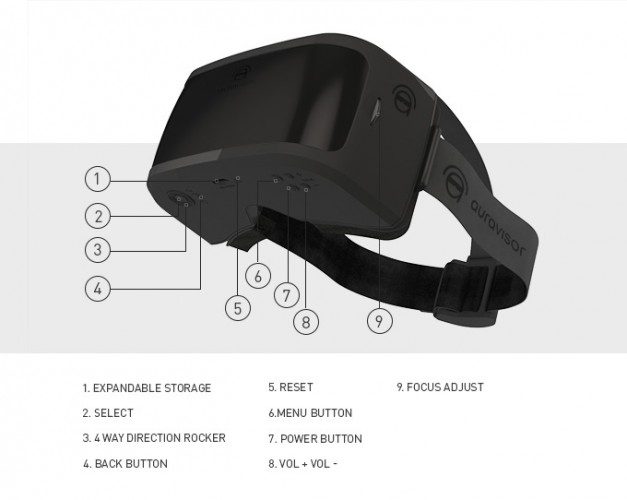A UK firm is making a bid for the untethered virtual reality headset space with a new headset called AuraVisor, a self-contained immersive device which packs processing power and display into one headset. The device hit Kickstarter on Monday and has already passed 50% of its £100,000 funding goal in around 24 hours.
Wires, they suck! This is one aspect of the first wave of consumer VR hardware that is unavoidably low tech, PC based virtual reality needs cables to deliver the low latency ‘off headset’ rendered visuals that are so important for a compelling, high-spec VR experience. This is the price you pay for cutting-edge visuals, at least for the moment.
The alternatives are of course mobile VR devices such as Gear VR. But the Samsung mobile phones powering that device were not built for specifically to be used with a virtual reality device and are currently compromised as a result.
The other way of course is to design and build a VR headset dedicated to portability with no concessions to the mobile phone market. AuraVisor is a new VR headset that places rendering horsepower, tracking sensors and display into one untethered package, free unencumbered by distracting cables. The device hit Kickstarter yesterday and, thanks to some high-profile early publicity, has already passed the 50% mark of its £100k funding goal.
The project is lead by James Talbot, CEO of Damson Audio, a company specialising in unique audio hardware for cyclists, headphones that don’t occlude sounds from the environment.
AuraVisor packs a quad-core Rockchip RK3288 with a Mali GPU, common in mobile devices such as tablets. The headset claims a 100 degree diagonal FOV, 5 hour battery life and a 1080p display running at 60Hz. Unlike all other primary rivals, the device currently uses an LCD display, which means no low persistence, however the Kickstarter page states this may change. Everything is orchestrated by by an Android operating system, access via a ‘simple smart scrolling’ GUI. IPD adjustment and focal control are present on the device too.
The AuraVisor ships with a ‘virtual reality system Bluetooth Game Controller’ which as far as we can make out is based around a regular, wireless gamepad with no motion sensing tech onboard.
Its direct competitors are slim right now but AuraVisor certainly isn’t first to the untethered VR table. Gameface Labs have been demonstrating their own prototypes (the latest of which we tried recently) for some time now. That said, the only way to get your hands on hardware from them right now is to apply for early access via their web portal here.
See Also: GameFace “Guarantees” Latency Equal to Gear VR, Mark 6 Prototype Field of View Impresses
By contrast, AuraVisor is promising an April 2016 delivery date for its backers of over £135 – although as ever with Kickstarter campaigns, especially those involving hardware, this may well slip.
AuraVisor is an interesting entry to a subcategory of the VR hardware space which is currently sparsely populated as yet which offers some significant benefits over its mobile phone and PC based rivals. We’ll be going hands on with the device in a couple of days and will report back with our experiences.









